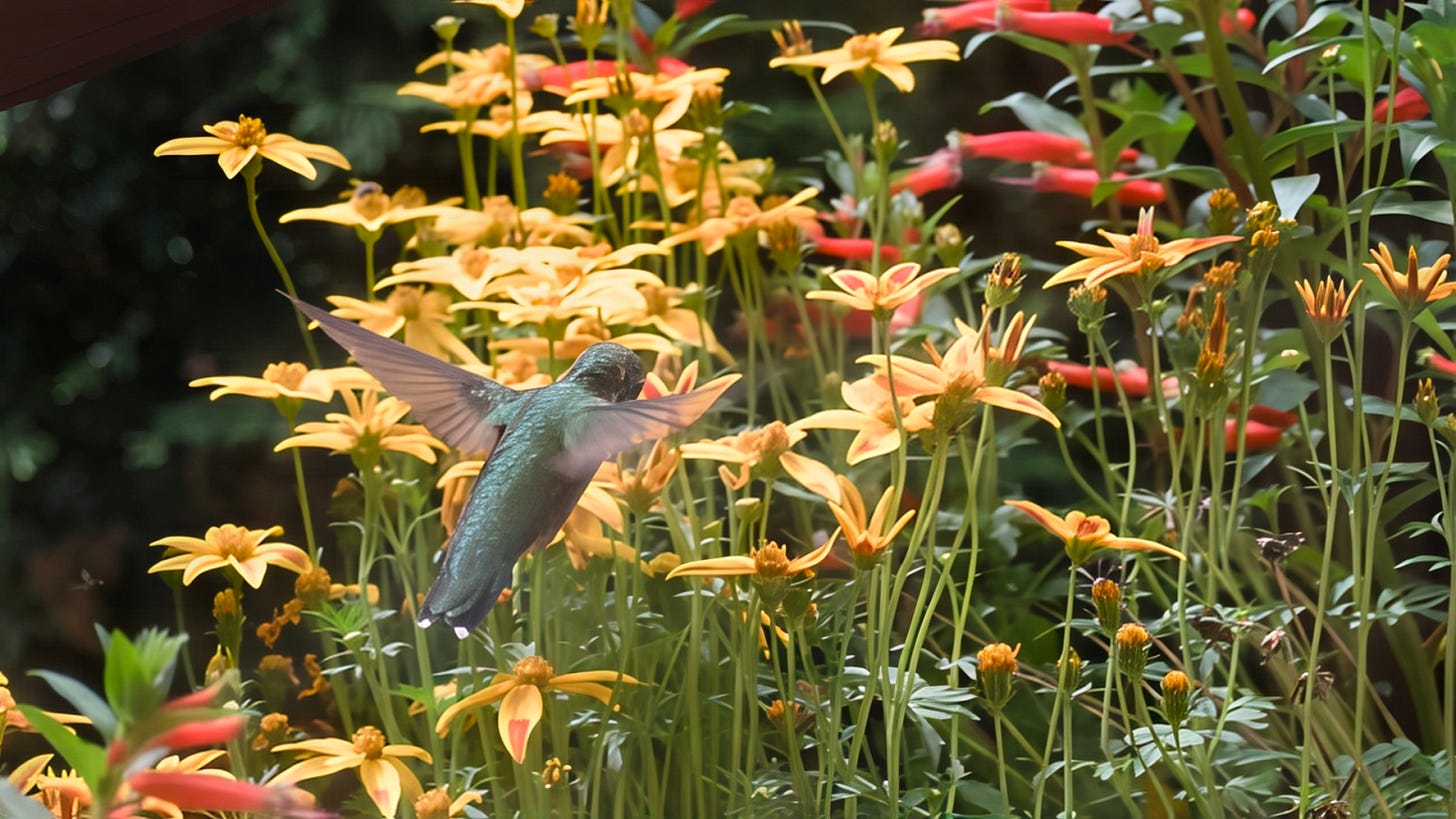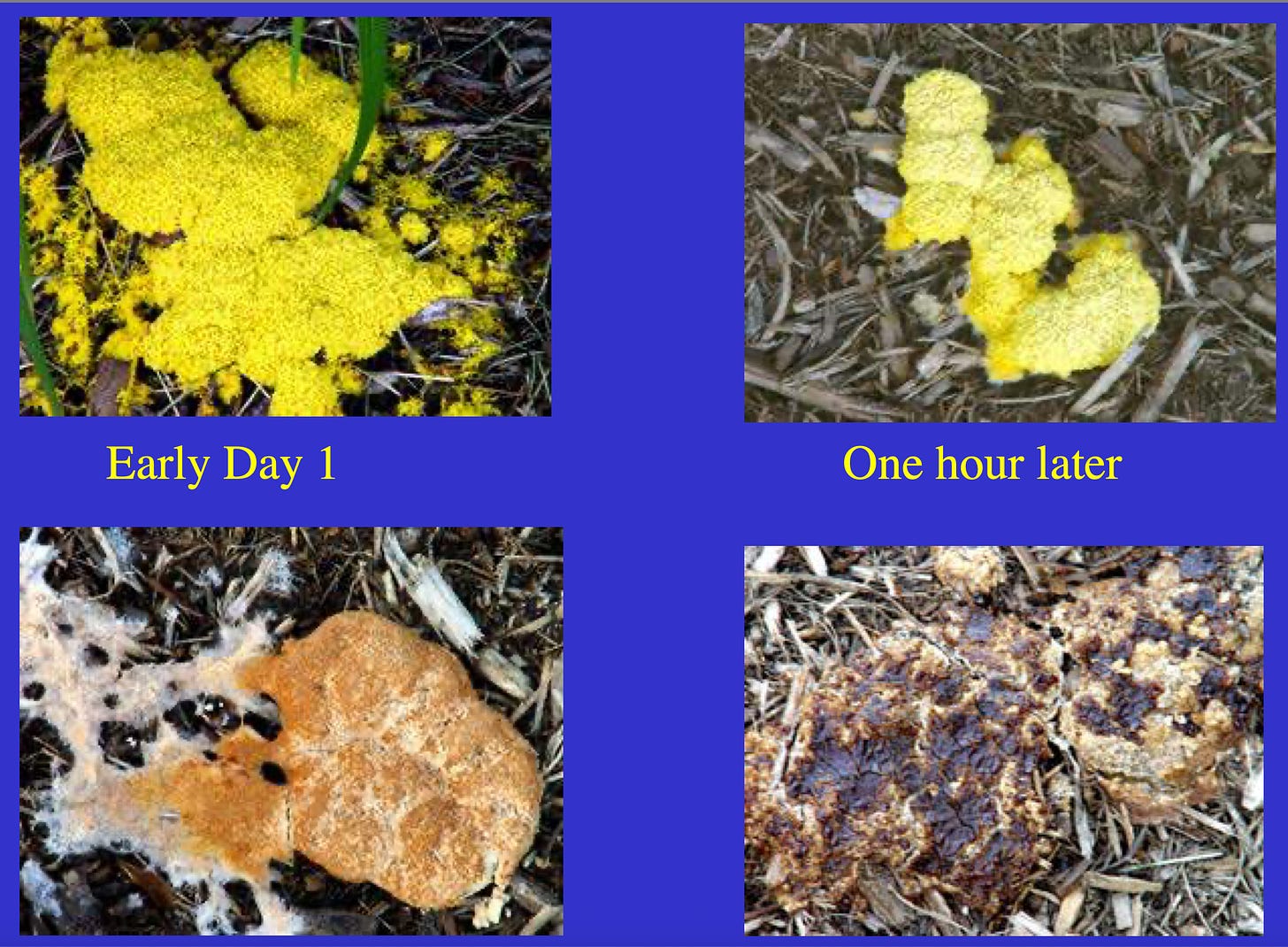There have been Ruby-throated Hummingbirds working the nectar sources in the garden for some time but only now Have I managed to get a photograph. These birds are flighty at the best of times and have an uncanny ability, shared with other species, of fleeing rapidly when they detect “optical lock” being engaged on a camera.
This chap was working a patch of Cuphea flowers - Mexican in origin nd definitely not-native where I live but totally irresistible to Hummers.
More on Dog Vomit Slime Mold
After posting yesterday’s picture of a growth of DVSM on a wood chip substrate I was reminded by a reader (thanks, @carolannie) that taxonomy has moved slime molds from the Kingdom of Fungi to a quite separate one all to themselves and called Protista. If you want to know more I refer you to the article linked to below which begins with a series of photographs of DVSM as it rapidly changes and disappears from view. Now, I appreciate that this is not a topic dear to the hearts of many people but for those easily fascinated and liable to wander down rabbit holes like I am, then this is the stuff for your bedtime reading. Enjoy.
I was also delighted to learn that there is a “specialist” Facebook group that operates under the name Slime Mold Identification & Appreciation and you can find it at https://www.facebook.com/groups/SlimeMold/ … what is even more wonderful is that it has over 75,000 members. Are there even that many people on earth who have even heard of slime molds?







Nice pics of your hummers. Not to sound to 'old hat' about slime molds and dog vomit in particular, but I bumped into this topic earlier in the year, with a rather amusing post by David B. Williams here on Substack. Here's the link:
https://open.substack.com/pub/streetsmartnaturalist/p/slime-molds?r=2l04ge&utm_campaign=post&utm_medium=web&showWelcomeOnShare=false
Hope it gives you a chuckle or two.
Slime moulds are fascinating, it doesn't really surprise me that so many people are interested.